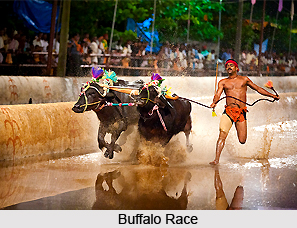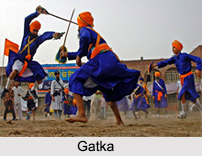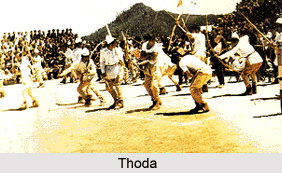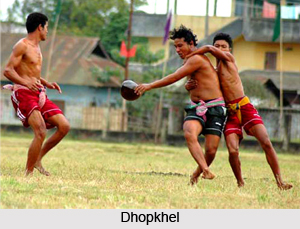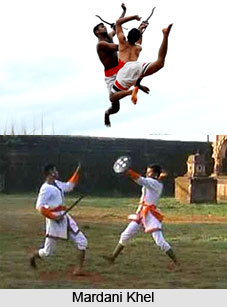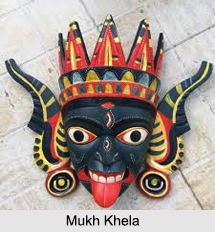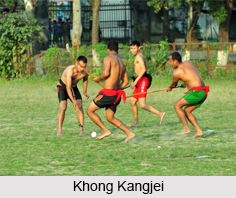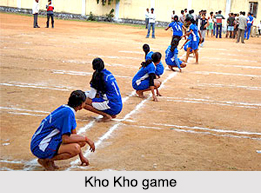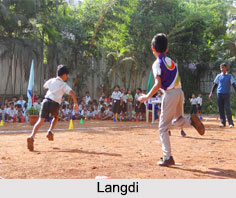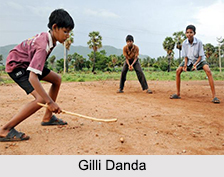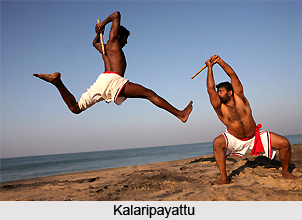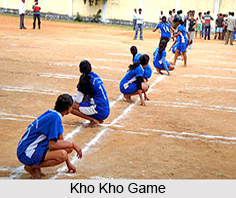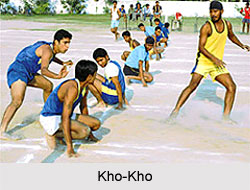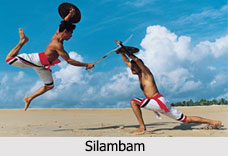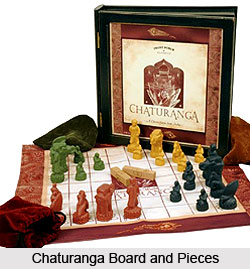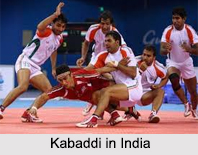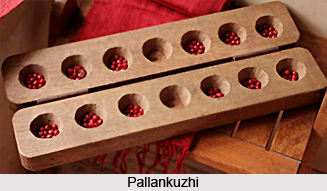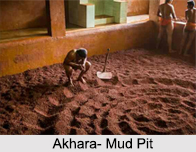 Like any other sports, wrestling also has its own set of rules. Without rules, there would be chaos and a lack of sportsmanship among the players. Rules help make the game more transparent and fair among the players. The history of wrestling in India is rich with a glorious past. Having evolved from South-Asian form of wrestling called Malla-Yuddha, wrestling in India was known as Pehlwani or Kushti. Pehlwans or the players used various grappling techniques, which evolved through the ages.
Like any other sports, wrestling also has its own set of rules. Without rules, there would be chaos and a lack of sportsmanship among the players. Rules help make the game more transparent and fair among the players. The history of wrestling in India is rich with a glorious past. Having evolved from South-Asian form of wrestling called Malla-Yuddha, wrestling in India was known as Pehlwani or Kushti. Pehlwans or the players used various grappling techniques, which evolved through the ages.
Rules of Wrestling in India
Wrestling in India is also known as Dangal and is the basic form of a wrestling tournament. Wrestlers from akharas in rural areas indulge in mud wrestling. It is from here that wrestlers traverse the long hard journey to national and international levels. The wrestlers are clad in a red loin cloth and get into full contact sparring sessions known as jor to polish their techniques in the mud pit.
Indian wrestling has some unique practises like the shoulder throw known as dhobi paat and strangle pin, commonly known as kasauta. Other moves include the locks, throws, pins and submission holds. Another form of wrestling is the kushti, which is fought between two contenders in a large area covered only with sand and mud. Kushti has simple rules; the men wrestle in their natural environment. The game is a trial of strength and the victor is one who pins his opponent to the earth with both shoulders touching the sand and mud. No blows with the hands are allowed and the men grapple with each other face to face. There is no rest period or rounds and the match once started goes on till one of the players is defeated or signals his acceptance of defeat. Earlier bouts never had a referee but modern kushti matches have incorporated a referee.
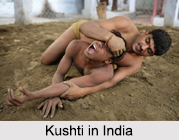 While Pehlwani and Kushti are widely practised sports in the country, Indians usually participate in freestyle wrestling at the Olympics, Asian Games, Commonwealth Games and other international events. The prime objective of Olympic wrestling is to put one"s opponent on their back or to pin the opponent to the ground. This is only applicable if any part of the shoulder or both shoulder blades of the opponent contact the mat for at least a period of 2 seconds. The format of the match session is 2 to 3 minutes. A wrestler on whom a hold is initiated will only be awarded points if by his/ her own action they brought the offensive wrestler to ground, conducted action, succeeded in controlling offensive wrestler using bridge position, actions that lead to a change in position, an instantaneous fall or if they have rolled from one shoulder to the other using elbows in bridge position.
While Pehlwani and Kushti are widely practised sports in the country, Indians usually participate in freestyle wrestling at the Olympics, Asian Games, Commonwealth Games and other international events. The prime objective of Olympic wrestling is to put one"s opponent on their back or to pin the opponent to the ground. This is only applicable if any part of the shoulder or both shoulder blades of the opponent contact the mat for at least a period of 2 seconds. The format of the match session is 2 to 3 minutes. A wrestler on whom a hold is initiated will only be awarded points if by his/ her own action they brought the offensive wrestler to ground, conducted action, succeeded in controlling offensive wrestler using bridge position, actions that lead to a change in position, an instantaneous fall or if they have rolled from one shoulder to the other using elbows in bridge position.
Offensive wrestler can get a penalty to lock hands (except cradles) around the torso of the defensive wrestler. It can only be done if the opponent is standing on their feet or close to the fall count. A referee will consider overlapping fingers as locked hands. An offensive wrestler can also get a point in danger position. This is the position when a defensive wrestler"s body assumes bridge position in order to avoid being pinned down. A danger position is considered when the wrestler"s line of the back or the shoulder is vertical or parallel to the mat, forming an angle of less than 90 degrees, but the position is assumed only to resist the fall. Danger position can also be assumed if the defending wrestler supports themselves on the elbows to avoid their shoulders being forced on the mat.
Points can also be scored through the grand amplitude throw, which records any action or hold by the offensive wrestler. This causes their opponent to lose contact with the ground or leads to a sweeping curve in the air, leading them directly to the ground or in the danger position.
Strikes and kicks aren"t permitted in the game. In freestyle Olympic match, if no wrestler scores in the given session, the referee of the match identifies the more passive player in the game, and gives them a 30 second window of opportunity to score. If the player fails to score, their opponent ends up getting a point.
The Olympic Wrestling Mat
The equipment used in the games includes a singlet, which is a one-piece garment made from spandex and lycra. This prevents the opponent from using anything over the wrestler as leverage. Red and white coloured singlets are worn. Special pair of shoes is worn for increasing mobility and flexibility of the wrestler, and they are light and flexible. Handkerchiefs can be carried by the players to stop bleeding. Each wrestler is recommended to wear a headgear for freestyle matches.
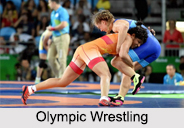 Scoring System in Wrestling
Scoring System in Wrestling
Wrestling, as a game has evolved with time and presently scoring system has been devised to evaluate the performance of the contenders better.
7 Point: A wrestler who brings down his opponent to the ground while passing behind and is in a position to hold him down in this position.
5 Points: For executing a throw of great height that results in an immediate danger position. The attacking wrestler employs major technical hold. In the case of a draw the sudden death rule is applied, i.e. whosoever scores the first point is the winner.
3 Points:
(a) A correct hold by a lift from "par terre" position bringing the opponent in a danger position.
(b) Lifted the opponent completely off the mat to a danger position.
(c) A correct hold from a standing position that brings an opponent into a danger position.
2 Points: Application of correct hold and placing the opponent in danger or the opponent touches the floor with both shoulders in ground wrestling.
Game Officials in Wrestling
Modern wrestling involves some official who are alo a part of the game apart from the two wrestlers.
Referee: The referee should be in white trousers, white shirt with the emblem of his country, white socks and white athletic shoes to be worn only on the mat. He should have a red sleeve or band on his left arm and blue sleeve or band on his right arm. The referee is responsible for the orderly conduct of the bout which he must direct according to the rules. He contributes to the allocation of points, which he indicates, with his fingers after a hold is executed. He indicates the points with the hold of his fingers to the judge and Mat Chairman by raising his right or left hand depending upon the points scored by the red or blue wrestler.
Judge: The judge follows the referee`s indication closely and records them in a score sheet. At the same time he will declare the score to the public by raising the number-bat of the colour attributed to the concerned wrestler. In case of the electronic score board, the points must be made known to all either by the judge if he is controlling it or by the special operator. The score board must be visible to the referee as well as to the wrestlers.
Mat Chairman: The Mat Chairman coordinates the work of the referee and the judge, in case of disagreement between the judge and the referee; he settles the issue to determine the results, the number of points, the falls, the cautions, disqualification, etc. If there is any difference in the decision of the referee and the judge, the Mat Chairman`s decision will be final.
Controller: Whenever the third caution is to be given the controller is the consultant.
Wrestling Federation of India is the Indian governing body of wrestling which governs freestyle champions, Greco-Roman and other similar types of competitions. The body organizes various national and international events, including camps for qualifying tournaments. The body affiliates with the Indian Olympic Association and UWW.
